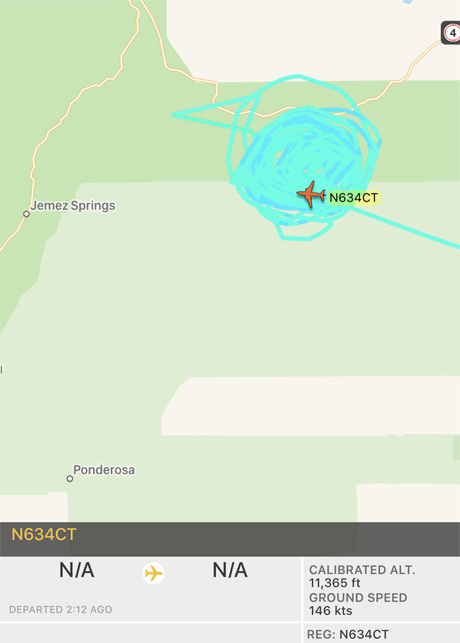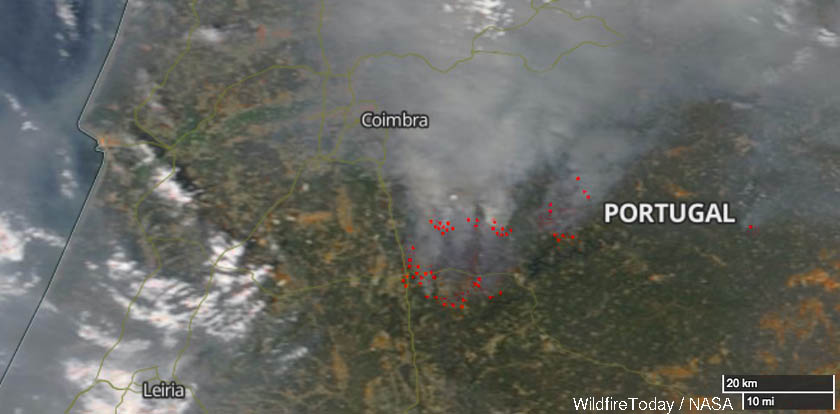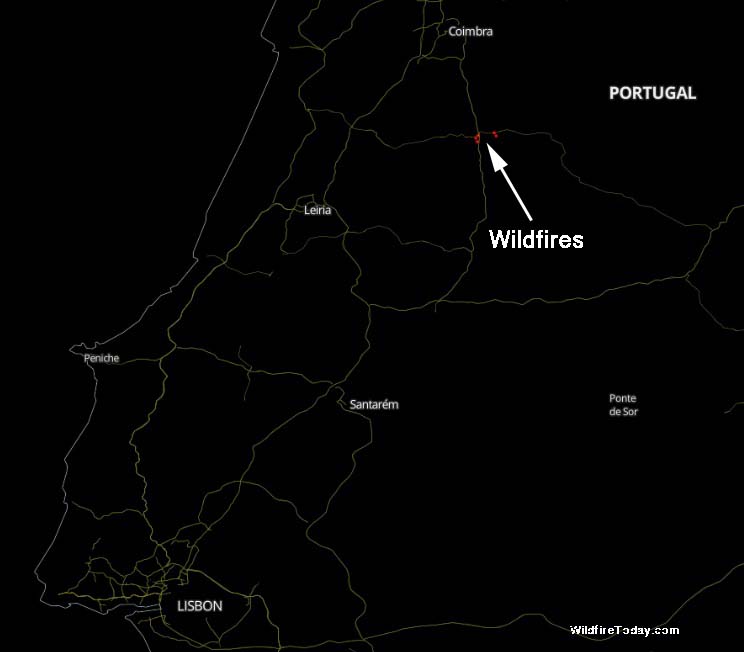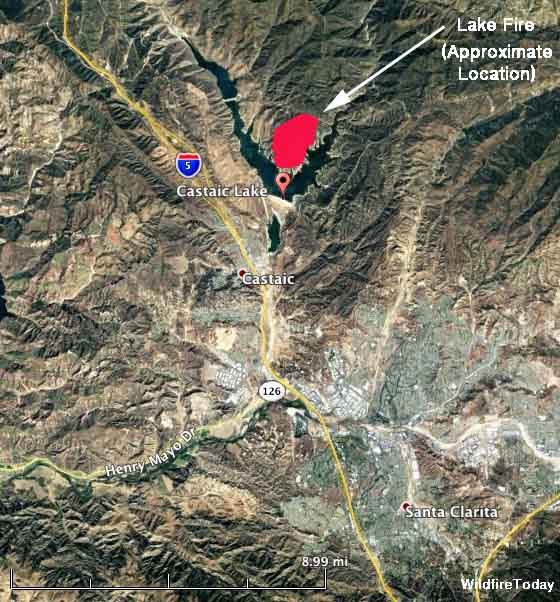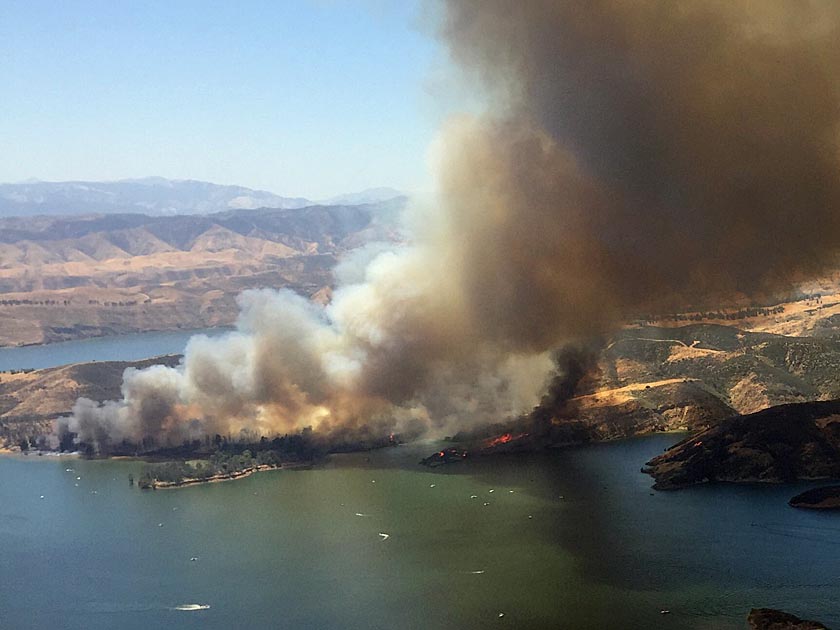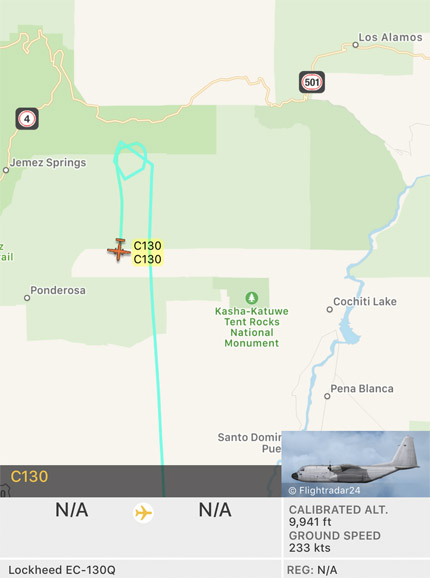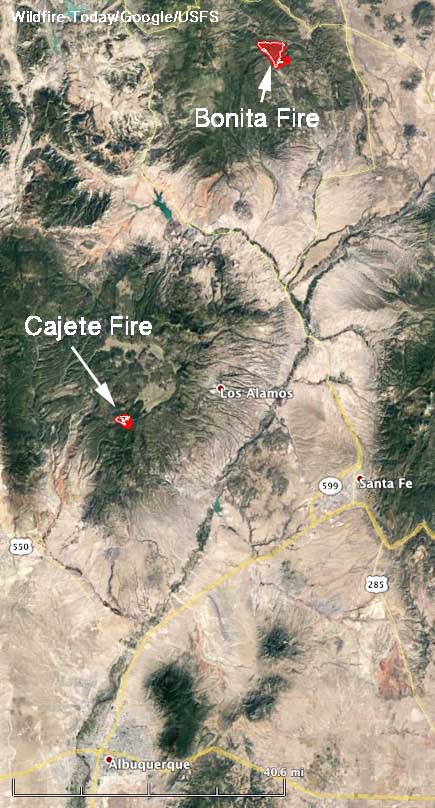Above: The Brian Head Fire at Brian Head, Utah. Photo by Iron County Sheriff’s Office, posted June 17, 2017.
The Brian Head Fire has burned at least one home in the town by the same name, which is 12 miles east of Cedar City, Utah. As of Saturday evening the fire had burned about 957 acres on the north side of the town near the Dixie National Forest. Multiple structures are threatened.
The fire was reported at 12:20 p.m. on June 17 and caused the evacuation of all 500 residents of the town.
A Type 3 Incident Management Team was due to arrive Saturday evening, and a Type 2 Team is expected at mid-day on Sunday.

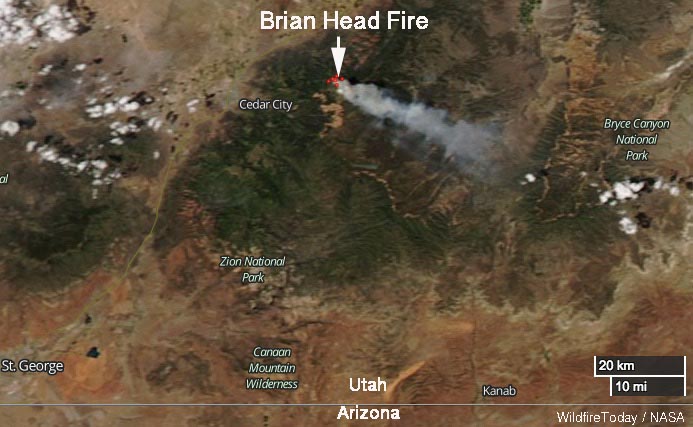
An inversion early Sunday morning trapped smoke, degrading visibility to the point where firefighting aircraft could not be used, but by noon MDT two Air Tractor 802A Single Engine Air Tankers were working the fire. They were reloading at Cedar City 12 miles away so they undoubtedly had short turnarounds in spite of the 4,000-foot climb from the air tanker base to the fire.
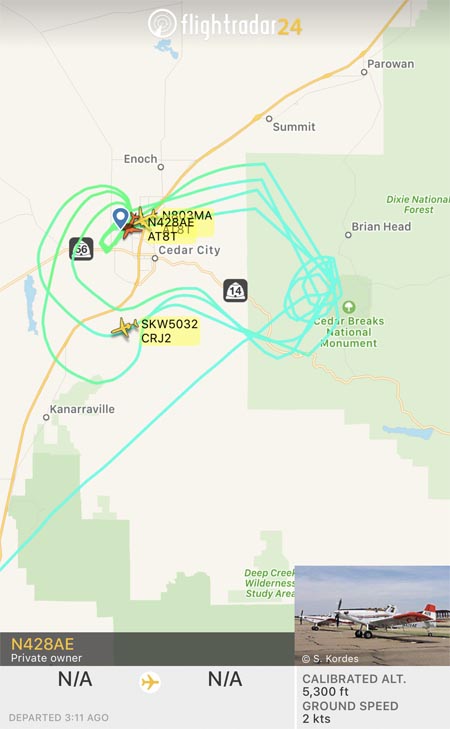
The wind on Saturday was from the northwest, but on Sunday it shifted to come out of the north. As you can see in the image above, at about noon on Saturday the flight paths of one of the Single Engine Air Tankers were concentrated south of Brian Head, on the west side of Cedar Breaks National Monument.
The wind on Saturday is predicted to be out of the north at 8 to 10 mph with gusts to 13. The relative humidity should be in the mid-20’s and the temperature will be in the high 60’s. The coolish temperatures are due to the altitude — 8,000 to 10,000 feet above sea level in the fire area, which is about 4,000 feet higher than Cedar City.
The impressive video below posted by the Iron County Sheriff Office shows an air tanker dropping retardant apparently into heavy smoke. Perhaps there were structures or firefighters, or both, threatened in that area.
The view from the porch yesterday before we were evacuated #BrianHeadFire pic.twitter.com/jRBgDWZ94a
— Heather Lewis (@FeatherLewis17) June 18, 2017
Brian Head fire grows; closures to include trails#StGeorge #BrianHeadFire #soutah https://t.co/MUhiD11VQg pic.twitter.com/i4VkIg62ja
— St. George News (@STGnews) June 18, 2017
#BrianHeadFire– Town of Brian Head has been evacuated. Highway 143 is closed. 350 acres. pic.twitter.com/stoLl9aosV
— Utah Fire Info (@UtahWildfire) June 17, 2017



